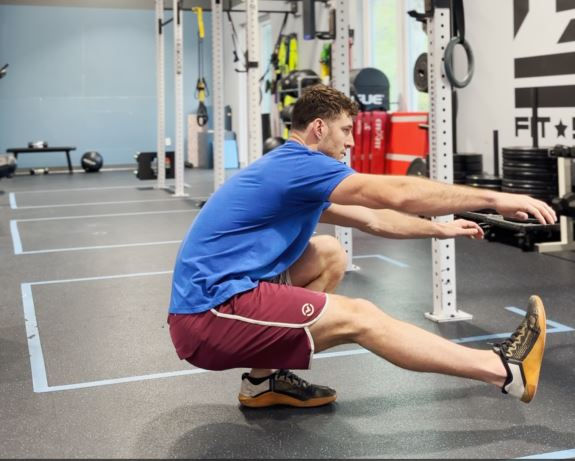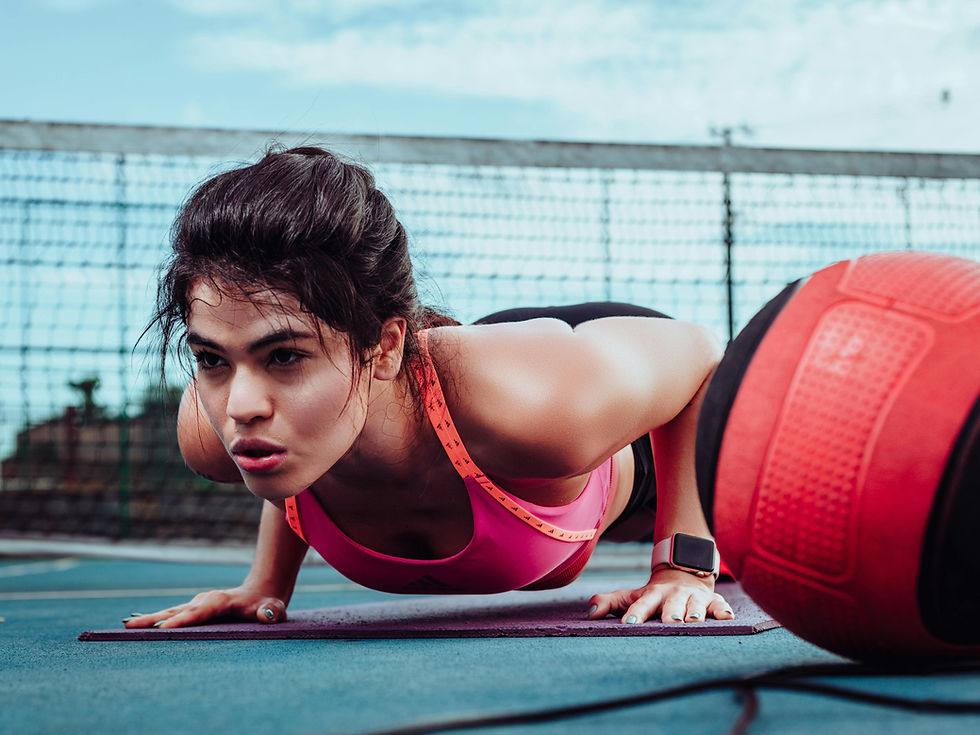The Back Squat: Benefits, Technique, & Variations
- Scott Ryan

- Jul 1, 2023
- 3 min read
Updated: Sep 7, 2023
In the realm of strength training and resistance exercise, few movements rival the back squat in terms of effectiveness and impact. The back squat is a compound exercise that engages multiple muscle groups, making it a staple in the training programs of athletes, powerlifters, and fitness enthusiasts alike. This introductory article aims to shed light on the back squat, discussing its benefits, proper technique, variations, and safety considerations.

Understanding the Back Squat
The back squat is a fundamental lower body exercise that primarily targets the quadriceps, hamstrings, glutes, and core muscles. It involves placing a loaded barbell across the upper back and shoulders while performing a controlled descent into a deep squatting position and ascending back to the starting position. This movement pattern recruits a wide range of muscles, promoting overall strength, power, and stability.
Benefits of Back Squats
1. Strength and Muscle Development: Back squats are renowned for their ability to stimulate muscle growth and increase strength in the lower body. By incorporating heavy loads, the exercise activates many muscle fibers, leading to hypertrophy and improved functional performance.
2. Enhanced Athletic Performance: The back squat has direct applications in various sports and physical activities, such as sprinting, jumping, and lifting. It develops lower body power, explosive force, and stability, translating into improved athletic performance across multiple disciplines.
3. Bone Density and Joint Health: Squatting under a loaded barbell places mechanical stress on the bones, promoting bone mineral density and reducing the risk of osteoporosis. Additionally, the squatting motion strengthens the ligaments and tendons around the knee joint, improving overall joint stability.
Proper Technique
1. Setup: Position the barbell on a squat rack at an appropriate height, ensuring it rests securely across the upper back, not the neck. Position your feet shoulder-width apart or slightly wider, toes pointing slightly outward.
2. Descent: Initiate the movement by hinging at the hips, simultaneously bending the knees, and lowering your body down. Keep your chest up, back straight, and heels firmly planted on the ground throughout the descent.
3. Depth and Alignment: Aim to achieve a full range of motion by descending until your thighs are parallel to the ground or slightly below. Maintain proper alignment, with your knees tracking in line with your toes.
4. Ascent: Drive through your heels, engaging the glutes and leg muscles to rise back up to the starting position. Exhale during the ascent and maintain control throughout the movement.
Variations and Progressions
1. Front Squat: This variation involves placing the barbell across the front of the shoulders, challenging the quadriceps and upper back to a greater extent.

2. Overhead Squat: An advanced variation that requires stability and mobility, the overhead squat involves holding a barbell overhead while performing a deep squat.

3. Box Squat: By using a box or bench as a reference point for squat depth, this variation helps improve technique, explosive power, and control.

4. Single-Leg Squat: Also known as the pistol squat, this unilateral exercise targets leg strength, balance, and stability.

Safety
To ensure safe and effective back squatting:
1. Warm up adequately before attempting heavy squats.
2. Start with lighter weights to master proper form before progressing to heavier loads.
3. Use a spotter or squat rack with safety bars for added security.
4. Pay attention to any pain or discomfort and consult a fitness professional if necessary.
5. Focus on maintaining a neutral spine and proper alignment throughout the movement.
Your First Week Free at Fit Societe!
The back squat is a fundamental exercise for building strength, power, and muscular development in the lower body. By mastering the technique, incorporating variations, and following safety guidelines, individuals can reap the numerous benefits of back squats, whether their goals are centered around athletic performance, general fitness, or body composition. So grab a barbell, hit the squat rack, and get squatting! If you're looking for more guidance on workouts or want a personalized fitness plan, book a free virtual consultation today with Fit Societe and get your first week free, too!
Scott Ryan, BS, CSCS, CF-L1, CF-W, BFRC
A professional coach who specializes in Applied Functional Science, Strength and Conditioning, CrossFit L1, and Olympic Lifting. He attended New England College in New Hampshire obtaining a bachelor's degree in Kinesiology with an emphasis on Biomechanics. He has a passion for injury prevention and coaching, as he was a collegiate athlete who suffered sports injuries. His goal is to get athletes back to optimal shape as well as prevent future injuries.



Comments